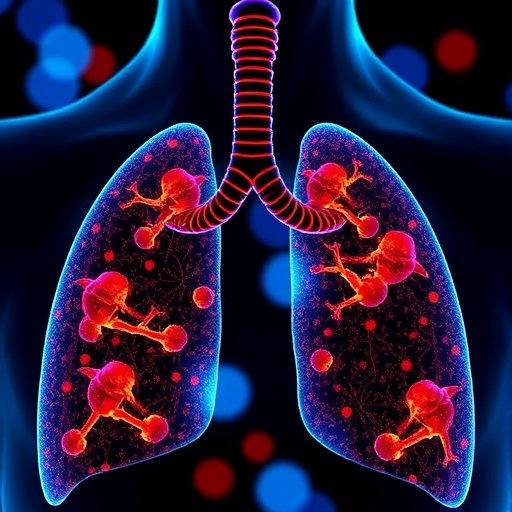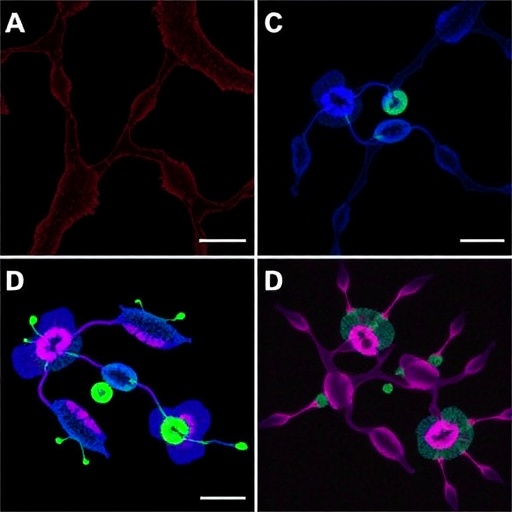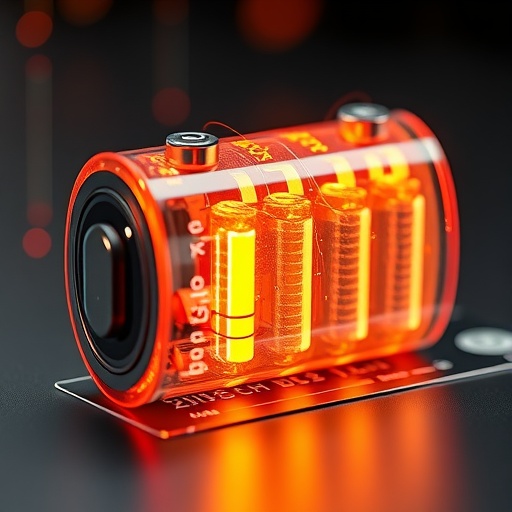PROTECT YOUR DNA WITH QUANTUM TECHNOLOGY
Orgo-Life the new way to the future Advertising by AdpathwayIn a groundbreaking pilot study published in the Journal of Medical Biology and Engineering, researchers have heralded a new era in the assessment of motor function through the Nine Hole Peg Test (NHPT) using advanced computer vision technology. The NHPT, traditionally a standard evaluation tool for fine motor skills, requires individuals to peg and unpeg a series of holes within a set timeframe, an exercise that can determine various neurological and orthopedic disorders. However, the conventional method has its limitations in terms of subjectivity and accuracy, frequently relying on a clinician’s manual counting and observation, which can introduce variance in results.
The innovation introduced by Fan, Liu, and Xie is centered around the integration of machine learning and computer vision algorithms to automate the NHPT evaluation process. Through the use of high-resolution cameras and sophisticated image processing software, the researchers have developed a system capable of precisely monitoring and quantifying the movements of the participants in real time. This approach not only minimizes human error but also ensures a high degree of reproducibility in the results obtained from different settings and populations.
Employing a cohort of test subjects, the researchers initiated an experiment where they captured an extensive array of video data as individuals performed the traditional NHPT. The recorded footage was subsequently analyzed using deep learning techniques to isolate specific movements and quantify performance metrics such as speed, accuracy, and consistency. These parameters are critical in determining the participant’s motor function capabilities, and harnessing AI to evaluate them offers unprecedented opportunities for more detailed insights into an individual’s fine motor skills.
The advantages of this digitalized assessment method are manifold. First and foremost, it removes the subjectivity associated with manual evaluations—reducing variability in test interpretations. The AI system developed in this study is programmed to identify not just the completion of tasks but also the nuances of movement that could indicate underlying conditions. Furthermore, as technology becomes integrated with healthcare processes, this method stands to facilitate remote monitoring and virtual assessments, expanding accessibility for those living in underserved areas or individuals with mobility challenges.
One of the most compelling aspects of the pilot study was the calibration process of the computer vision system. The researchers trained their model using a diverse dataset compiled from individuals with varied backgrounds and motor capabilities. By ensuring that the algorithm had a robust foundation, they were able to increase its accuracy and generalizability across different patient populations. This foundational work is particularly crucial for translating the technology from experimental settings into widespread clinical practices.
Despite the promise that computer vision holds, the researchers also addressed the potential challenges of implementing such technologies in everyday clinical environments. Factors like variations in lighting, occlusions, and differences in camera angles could potentially affect the accuracy of data captured during evaluations. By rigorously testing their system under varied conditions, the research team was able to refine their model and establish protocols for consistent performance across various clinical settings.
Moreover, the study’s pilot scope acts as a base for future investigations. The researchers have emphasized the need for larger, multi-centered trials to validate their findings and test the system against a broader spectrum of neurological and musculoskeletal disorders. Only through extensive validation can this digitalized NHPT method be fully integrated into clinical workflows, ensuring that it meets medical standards while providing actionable insights for clinicians.
Another exciting aspect of the research lies in its implication for training and rehabilitation. Physical therapists and occupational therapists could leverage this technology to tailor rehabilitation programs based on more precise measurements of motor skills. Personalized therapies could revolutionize recovery pathways for patients recovering from strokes, traumatic injuries, or degenerative diseases, emphasizing the role of a data-driven approach in physical rehabilitation.
Furthermore, the findings have broader implications extending into telehealth, a sector that has seen unprecedented growth in recent years. With the landscape of healthcare evolving, integrating advanced assessment tools like this computer vision-driven NHPT could enhance virtual consultations, offering healthcare providers the means to assess motor skills remotely. Such innovations could greatly enhance patient engagement and adherence to rehabilitation protocols while reducing the need for physical consultations.
As the digital milieu continues to evolve with AI and machine learning, the potential for applications in different areas of medicine is boundary-less. The researchers behind this study are optimistic that their work could pave the way for future technological advancements in other patient assessments—extending beyond motor skills to cognitive evaluations and behavioral analysis. The intersection of health and technology remains fertile ground for pioneering innovations that can reshape how healthcare is delivered.
The pilot study’s findings showcase the remarkable benefits of harnessing technology in clinical assessments, addressing long-standing challenges faced by healthcare professionals. The promise of real-time performance analytics, coupled with objective data assessment, may well transform the landscape of patient care in neurology and rehabilitation. As this study garners attention within the medical community, ongoing collaboration among engineers, clinicians, and AI specialists will determine its trajectory and ensure that such advancements converge towards improving patient outcomes globally.
In conclusion, Fan, Liu, and Xie’s research acts as a clarion call for the integration of computer vision technologies into clinical assessments, opening the door to standardized, objective, and universally accessible measurement tools. This could mark the dawn of more precise approaches to rehabilitation and assessment methodologies, ensuring that patients receive the highest level of care through innovative technological advancements.
This extensively researched pilot study isn’t just a leap in how we assess fine motor skills—it’s a pivotal step towards a future where technology and medicine converge seamlessly for better patient care.
Subject of Research: Computer Vision-Driven Digitalization of Motor Function Assessment
Article Title: Computer Vision-Driven Digitalization of the Nine Hole Peg Test Assessment Method: A Pilot Study
Article References:
Fan, Y., Liu, A., Xie, Q. et al. Computer Vision-Driven Digitalization of the Nine Hole Peg Test Assessment Method: A Pilot Study.
J. Med. Biol. Eng. (2025). https://doi.org/10.1007/s40846-025-00980-1
Image Credits: AI Generated
DOI: 10.1007/s40846-025-00980-1
Keywords: Computer Vision, Digital Health, Motor Function Assessment, Rehabilitation, Neurology, Machine Learning, Telehealth, Fine Motor Skills.
Tags: advanced image processing in healthcareautomated assessment tools in rehabilitationcomputer vision in motor function assessmentinnovative healthcare technologyintegration of AI in physical therapymachine learning for fine motor skillsNine Hole Peg Test automationobjective evaluation of neurological disorderspilot study in medical engineeringreal-time monitoring of motor tasksreducing subjectivity in clinical assessmentsreproducibility in motor skill tests


 4 hours ago
4
4 hours ago
4





















 English (US) ·
English (US) ·  French (CA) ·
French (CA) ·